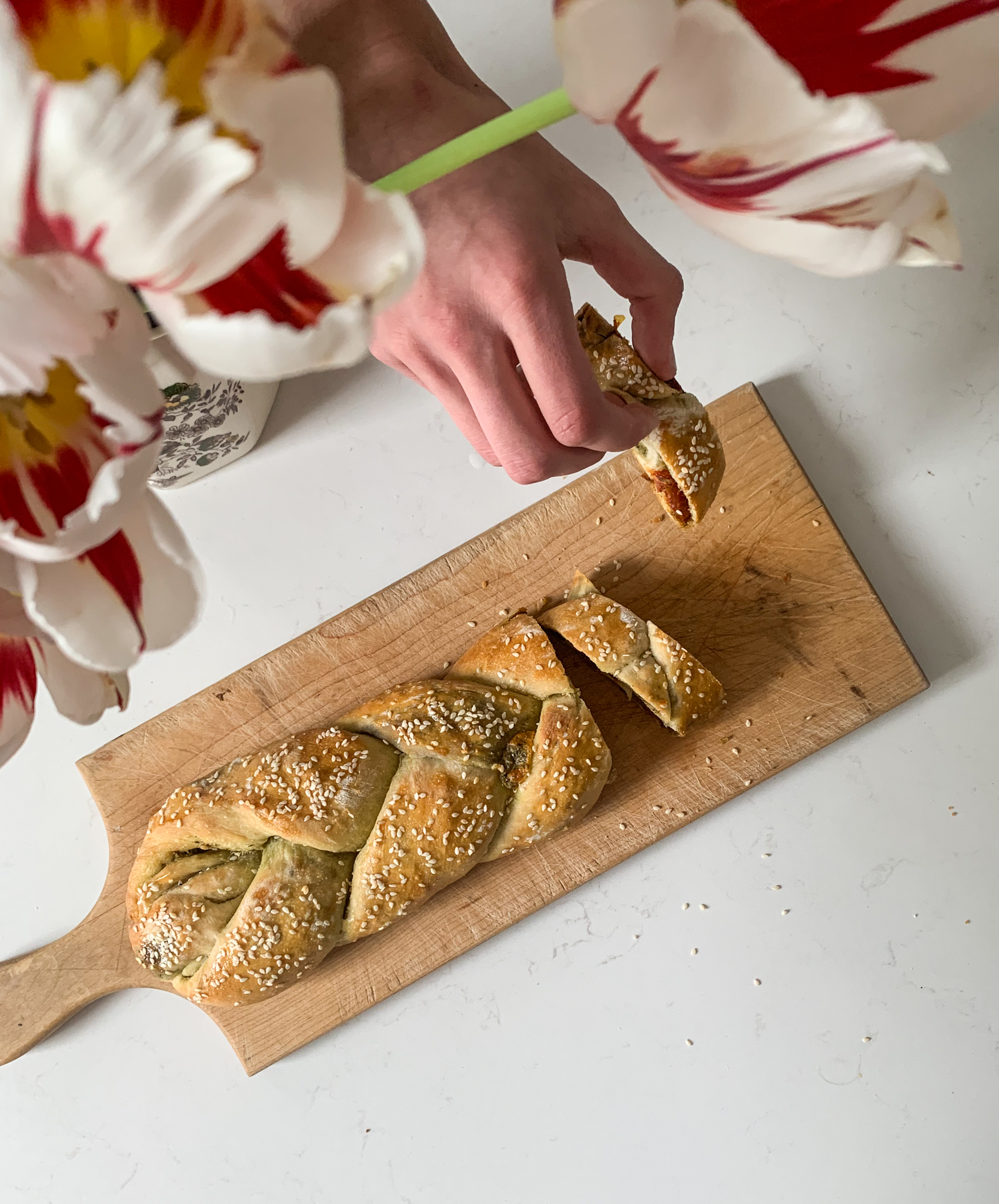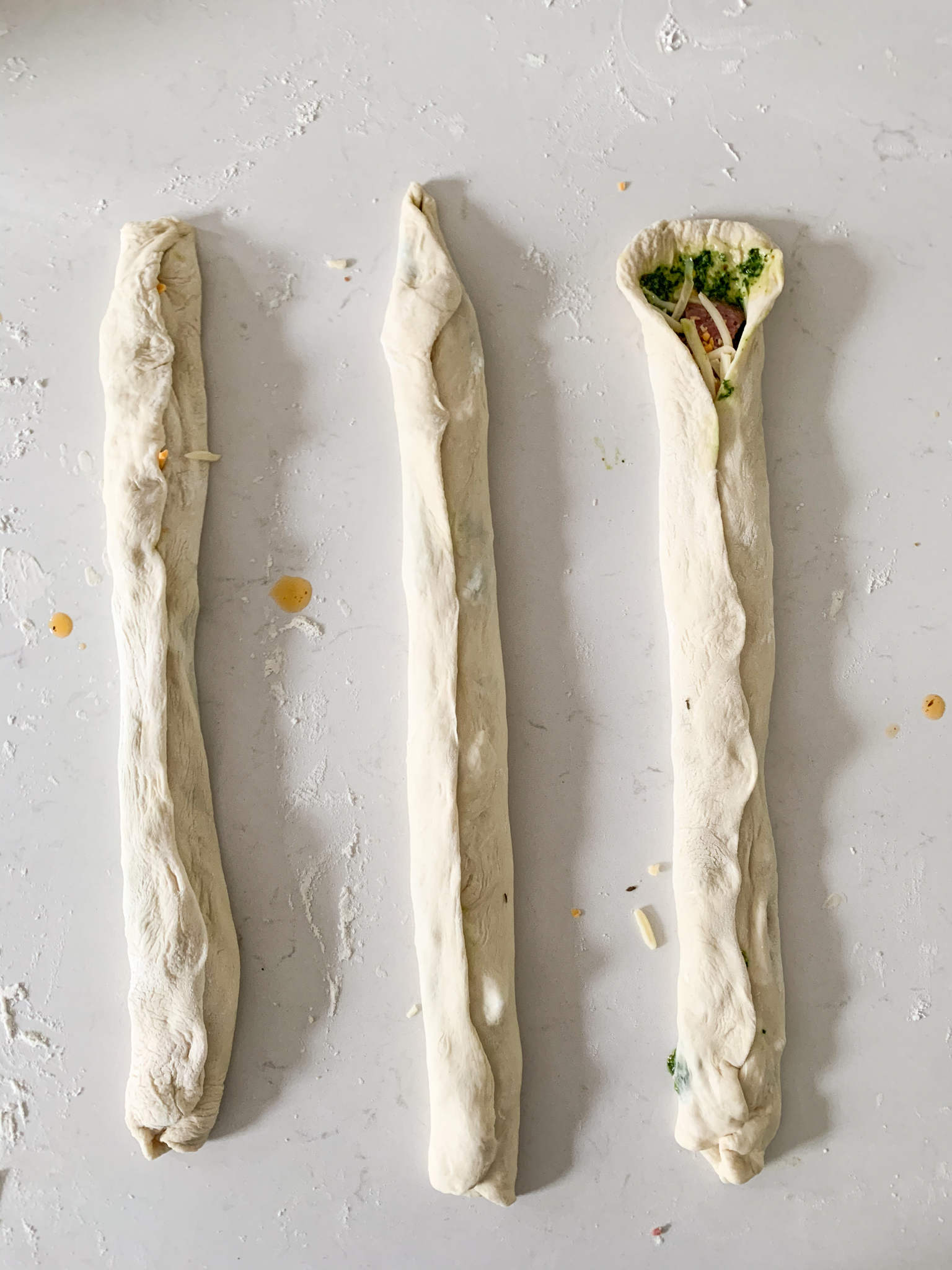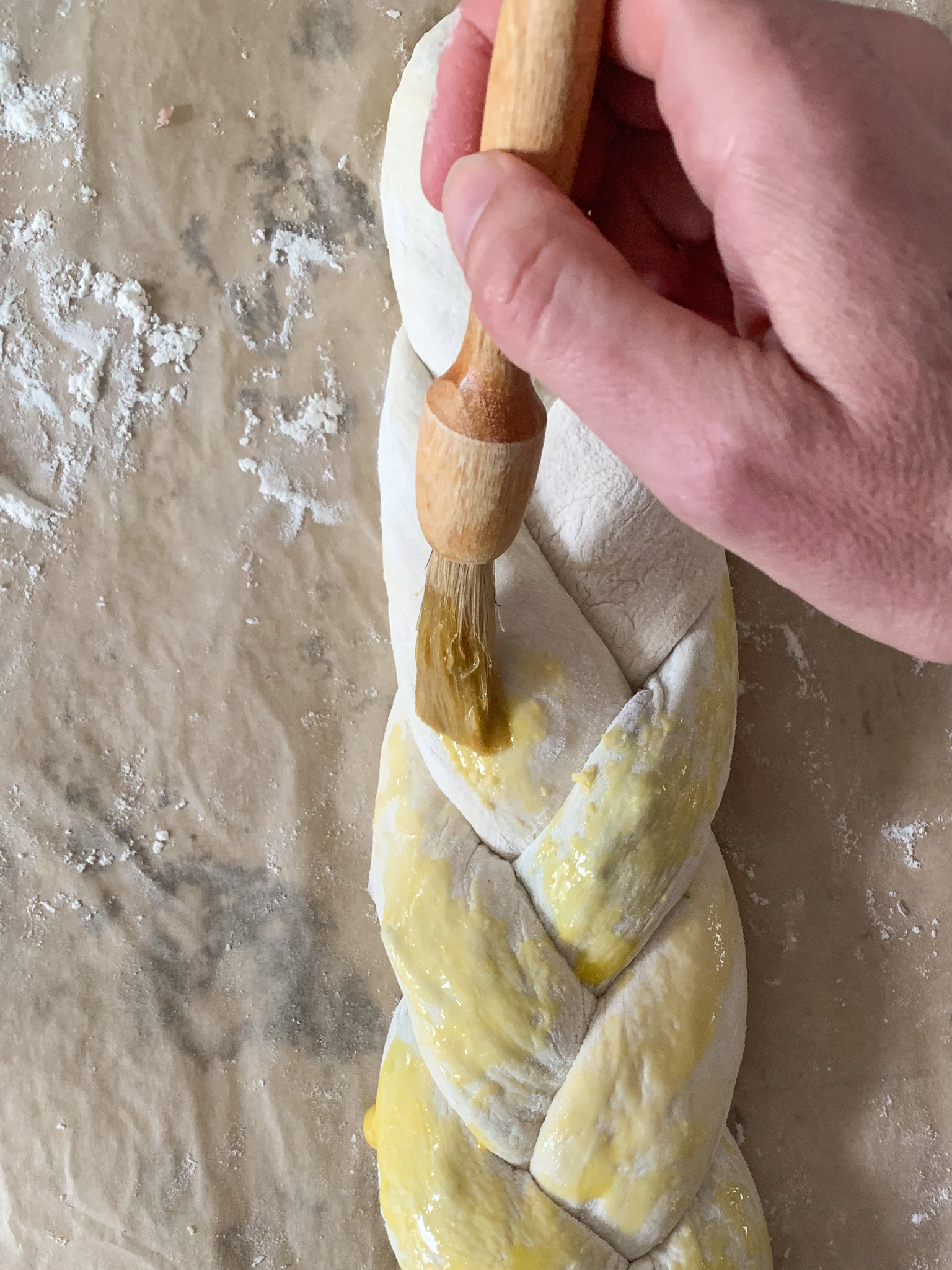
I am making a braided pizza. It’s fussier than my usual pizza routine, but easier than it looks. Braiding pizza is more of an attitude than a recipe; divide a pound of dough into thirds, roll each third into strips of equal length, top with whatever suits those who are eating it, fold the dough in half lengthwise so you have three equal tubes, then braid them together. The end result is a representation of the ingredients in your kitchen, the people in your house and your approach to the unknown, woven together into one, tidy braid.
I like the structure of a braid. The pandemic, and living in isolation, has taught me that I like, or need, structure in general. Without deadlines, accountability, scheduled time for exercise and a rough meal plan, I float along, adrift. Creativity can exist within the structure. One child wants slivers of salami. Another wants bottled tomato sauce. The third hates artichoke hearts and insists on pre-shredded cheese. I want homemade pesto, made with the last of the walnuts and local spring garlic. So we layer ingredients into a structure and hope for the best.
I’m taking an online writing class in response to my need for structure. Last week’s homework was to ‘write into a structure’. The assignment comes from Priscilla Long’s book The Writer’s Portable Mentor, in which Long shares two work habits of highly successful authors, gleaned from the Pacific Northwest Writers Association Conference she attended in 2004: write 1,000 words every day (with one day off) and write into a structure.
In the case of writing, this means choosing a structure – a theme, a collage, a dramatic story, or, a braid – and writing into it.
This makes some people itchy. Where is the creativity? The spontaneity? The flow? To this Long says, “writing everyday without structure puts you on the road to Never Never Land – never finishing, never publishing.” Write freely, first, she says, then pour the words into something.
“The form is the vessel. What goes into it is up to the writer.”
I’m working on a two-stranded braid, where two topics are stretching and pulling against each other. Food writing is often like this; ingredients and method create one strand, while life, memory, and words twist and turn alongside. They need each other.
And sometimes the result is a braided pizza stuffed with salami, processed cheese and a base layer of pesto. The braid is the vessel. What goes into it is up to the cook(s).
PS. The Crane Wife, written by CJ Hauser and published in the Paris Review in 2019, is a beautiful example of a braided essay. Thanks to Molly Wizenberg for reminding me of this essay and bringing structure to my life!


How to Make a Braided Pizza
Start with one 450g (1 lb) ball of pizza dough. I bought this one from Salvatores.
Preheat oven to 350F.
Divide dough into three equal parts.
On a floured surface, roll out each piece into three strips, roughly 30-33cm long (11-13 in) long and 13-16cm (5-6 in) wide.
Line a cookie sheet with parchment, dust lightly with flour and transfer pizza dough strips to the parchment paper.
Top strips with whatever you like, making sure ingredients aren’t piled too high – this makes it hard to seal the ‘tubes’ and braid them. I used ½ cup (125ml) thick pesto (if it’s too wet oil will seep from the braid – nothing serious, just a warning), grated cheese, roasted cherry tomatoes and thinly sliced salami.
Pull long edges together then gently pinch seams to create three long tubes.
Layer / pinch the tops of the tubes together, then carefully braid together, twisting tubes slightly so seam-side is tucked inside the braid. Pinch the ends together and tuck under.
Wisk one egg yolk in a small bowl and brush yolk over the braid. Sprinkle with sesame seeds, if you’d like.
Bake for 30 minutes, or until golden and cooked through.
If in doubt, this cheesy youtube video will help.
